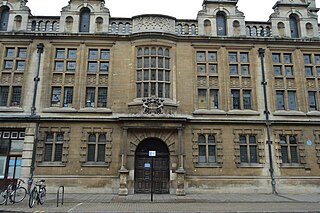

The Spinning House, also known as the Cambridge House of Correction and Hobson's Bridewell, was a workhouse and prison built in St Andrew's Street, Cambridge in the 1600s and demolished in 1901. In the Victorian era it held local women suspected by the Proctors of having a corrupting influence on the male student population, until this power was removed by Act of Parliament in 1893. This removal followed the high-profile case of 17-year-old Daisy Hopkins, who was arrested in 1891 for the crime of "walking with a member of the university"; she sued the Proctor and lost in a trial that severely attacked her moral character but nevertheless prompted public debate about the legitimacy of such arrests.
The site of the Spinning House is marked by a blue plaque.
References
- OSWALD, JANET (August 2012). "The Spinning House girls: Cambridge University's distinctive policing of prostitution, 1823-1894". Urban History. 39 (3): 453–470. doi:10.1017/S0963926812000223. S2CID 146776523. ProQuest 1030088218.
- Higginbotham, Peter. "The Workhouse in Cambridge, Cambridgeshire".
- Heggie, Vanessa (19 October 2012). "Cambridge University's Victorian prison for prostitutes". The Guardian.
- Cambridge, The Real (19 January 2012). "Cambridge – house of correction".
- Heggie, Vanessa (19 October 2012). "Cambridge University's Victorian prison for prostitutes" – via The Guardian.
This Cambridgeshire location article is a stub. You can help Misplaced Pages by expanding it. |